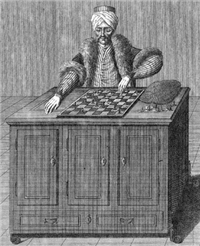Knocking Me Off The Perch
by in Bring Your Own Code on 2009-08-19 Not too long ago, I went up to Windsor, Ontario with my lawyer, Mr. Van Dress. Like my netbook, I never like to leave town without legal representation. Since there are really only three things to do in Windsor – drink, gamble, and buy Cuban cigars – we picked up some stogies, drank until we were confident we’d win, and headed over to the casino.
Not too long ago, I went up to Windsor, Ontario with my lawyer, Mr. Van Dress. Like my netbook, I never like to leave town without legal representation. Since there are really only three things to do in Windsor – drink, gamble, and buy Cuban cigars – we picked up some stogies, drank until we were confident we’d win, and headed over to the casino.
Before long, I had blown through far too much money on blackjack, and Mr. Van Dress had “invested” just as much on craps. Checking our pockets, I had $2 in chips remaining and he had $8, so we walked towards the roulette tables to place one last bet. Which table? and Black or Red? were the burning questions, and the answer seemed obvious: Table #3 and Red. After all, the table’s counter showed that black had just come up four times previously, so that meant red would have to come up next. Right?

 Jul 09
Jul 09 Long before the advent of software, computers, or even electricity, Wolfgang von Kempelen debuted one of the world’s most spectacular technological marvels ever invented, even by today’s standards. Inspired by the then-famous illusionist François Pelletier, Kempelen wanted to build something so incredible that it would top Pelletier’s – and all others’ – illusions, and that he did. The year was 1770 and the machine was a chess-playing automaton known as The Turk.
Long before the advent of software, computers, or even electricity, Wolfgang von Kempelen debuted one of the world’s most spectacular technological marvels ever invented, even by today’s standards. Inspired by the then-famous illusionist François Pelletier, Kempelen wanted to build something so incredible that it would top Pelletier’s – and all others’ – illusions, and that he did. The year was 1770 and the machine was a chess-playing automaton known as The Turk.